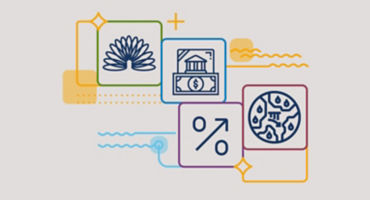- Equity Strategist
Skip to main content
- Funds
- Insights
- Capabilities
- About Us
- My Account
The views expressed are those of the author at the time of writing. Other teams may hold different views and make different investment decisions. The value of your investment may become worth more or less than at the time of original investment. While any third-party data used is considered reliable, its accuracy is not guaranteed. For professional, institutional, or accredited investors only.
Since the collapse of Silicon Valley Bank (SVB) on 10 March 2023, concerns surrounding the US banking system have swirled. In my view, three questions summarize these uncertainties:
On the back of COVID-related stimulus and robust market conditions, between 2020 and 2022, the US banking system experienced a period of unprecedented deposit growth. This acceleration of deposits was particularly pronounced at SVB because the bank had a concentrated start-up/venture capital and high-net-worth customer base. Fearing a period of protracted low interest rates, but with an inability to deploy excess deposits into loans in a timely manner, in 2021, SVB made the decision to ramp up its purchase of longer-duration US Treasuries and government-backed mortgage securities.
With SVB’s customer base heavily concentrated among tech and start-up companies, as economic and market conditions tightened in 2022, the deposit inflows turned into accelerated outflows. This coincided with the period of rapidly rising interest rates, which pushed SVB’s portfolio securities underwater.
As outflows became more significant in late 2022, the bank’s limited liquidity became constrained. Eventually the bank had to start selling assets below par to raise liquidity, which only led to a further acceleration in deposit outflows, and the capital and liquidity hole quickly became too big to fill. In response, US regulators placed SVB into receivership on March 10.
The bottom line is that, in the case of SVB, a significant asset-liability mismatch led to large unrealized security losses as interest rates rose. This combination of investment losses, a heavily concentrated customer base, and constrained liquidity on both sides of the balance sheet resulted in the second-largest bank failure in US history.
While it’s evident that SVB was an extreme outlier in terms of risk, the broader US banking system isn’t necessarily in the clear. Throughout 2021, many other banks accelerated the purchase of low-yielding securities. With the subsequent dramatic increase in interest rates, these banks now also have large, low-yielding, long-duration security and loan books that are deeply underwater.
In response to the shake-up in the sector, the US Federal Reserve (Fed) and Federal Deposit Insurance Corporation (FDIC) implemented extraordinary backstop measures on March 12. These measures, meant to boost confidence in the financial system, provide a liquidity backstop for the US banks, but fail to resolve the constraints on the asset side of the balance sheet.
While all banks have been impacted by the sharp rise in interest rates, the large banks with more than US$700 billion in assets are in a relatively advantaged position. For these larger banks, available-for-sale (AFS) securities and loans are already marked-to-market (MTM) through generally accepted accounting principles (GAAP) and regulatory capital.
Conversely, for banks with less than US$700 billion in assets, AFS gains/losses flow through GAAP only. This is how SVB was deemed to be solvent by regulators even though GAAP equity was less than US$0.
While the situation with SVB represents an extreme case, many other banks have large AFS losses that could become problematic under certain market and liquidity conditions. These securities are predominantly government-backed mortgage securities and government bonds, so it’s not credit, but higher interest rates driving losses. Banks with significant AFS unrealized losses remain at risk.
Given the particulars of the SVB situation, systemic risks appear contained. The Fed/FDIC intervention on March 12 most likely stopped the risk of a “domino effect” of bank runs in the wake of the SVB collapse.
More concerning are the potential impacts on bank liquidity, funding, and lending standards. Before this event, banks were already tightening lending requirements, and the banking stresses will likely lead to tighter liquidity and credit conditions. This in turn could exacerbate already-slowing financial and economic conditions, negatively impacting economic and corporate profit growth in the second half of this year and into next. With these heightened risks, investors may do well to exercise caution when approaching the market against the backdrop of tightening in financial conditions.
As an offsetting positive, leading up to this period of banking sector volatility, household balance sheets were strong, thanks to excess savings accumulated during the pandemic. However, periods of financial and economic uncertainty have historically led to a rise in precautionary savings, so it’s possible that savings levels may rise further in light of recent events.
It may be prudent, however, to avoid being lulled into a false sense of security just because excess savings are able to provide a near-term cushion, suggesting we’ve returned to a “goldilocks” market environment. Again, with credit growth already slowing before the SVB situation, it’s crucial to watch developments in consumer sentiments and bank-lending standards. With the wide range of outcomes and risks skewed to the downside, it’s difficult to declare that we’re completely out of the woods.
The next three to six months will be critical. If we see a clear and sustained resolution around capital and bank profitability during this time, confidence in the banking system could be reasonably restored. This would lower the probability of a more severe credit contraction and stabilize investor sentiments, despite still-elevated inflation and a tight labor market.
While many of the acute banking vulnerabilities have been contained, the ripple effects of the SVB collapse still present economic and financial risks that we’ll be keeping a close eye on going forward.
Expert

State of the credit markets: Does cash rule everything around us?
Continue readingURL References
Related Insights
Stay up to date with the latest market insights and our point of view.
The shifting liquidity landscape: What’s at stake?
The beginning of the end could be in sight for the Federal Reserve’s quantitative tightening (QT) program. US Macro Strategist Juhi Dhawan considers the Fed's next steps and what they could mean for banks, liquidity, and markets broadly.
State of the credit markets: Does cash rule everything around us?
Fixed Income Portfolio Manager Brij Khurana outlines the state of the credit market today, compares historical periods of quantitative easing, and warns credit investors of cash scarcity in the near future.

Private credit in a new regime
We explore how a shifting macro backdrop, ongoing banking crisis, and evolving competitive dynamics may create opportunities across private credit markets.

Credit market outlook: Expect greater opportunities in back half of 2023
Against a backdrop of elevated recession risks and banking-sector stress, Fixed Income Portfolio Manager Rob Burn identifies relative-value sector opportunities in the credit market.

Inflation loosens its grip, but bank turmoil could put the squeeze on US growth
US Macro Strategist Juhi Dhawan weighs the benefits of disinflation for consumers and companies against the risks of a credit crunch brought on by the recent bank crisis.

Global high yield: Attractive entry points could soon emerge
Fixed Income Portfolio Manager Konstantin Leidman shares his outlook for high-yield fixed income for the rest of this year and beyond.
Did the Fed just make a policy error?
Did the Fed just make a policy error? All things considered, Fixed Income Portfolio Manager Jeremy Forster thinks the answer is yes. Learn why and what the implications could be.
How do bank failures impact fintech?
Global Industry Analyst Matt Ross analyzes the ways in which recent US bank failures could impact the fintech sector in public and private markets.
Three macro assumptions that could be just plain wrong
Fixed Income Portfolio Manager Brij Khurana offers his non-consensus take on three entrenched, but potentially flawed, beliefs in today's market environment.
Lessons from 2008: Stress testing portfolios in today’s market
While very different from 2008, the current market environment makes a strong case for portfolio stress testing. Gregg Thomas, Co-Head of Investment Strategy, offers suggestions for improving the process, including assessing factor positioning and reducing recency bias.
Commercial real estate: Seeking shelter from the storm
Finding potential opportunities in commercial mortgage-backed securities these days is all about knowing where to look, says Fixed Income Credit Analyst Carolyn Natale.
URL References
Related Insights